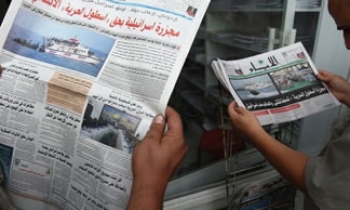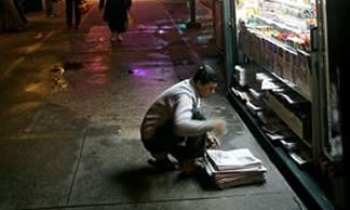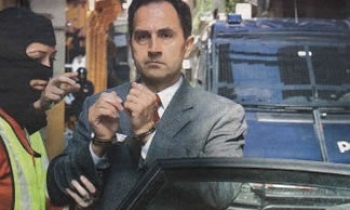Advertising is the lifeblood of newspapers, supplying 75 percent to 80 percent of their revenue.
So it is not good news for newspapers that many of the nation's biggest newspaper advertisers have problems of their own. Four of the top 10 advertisers, for example, went through mergers in the last two years. All cut advertising afterward.
"Those are a lot of punches to absorb, and I think they do explain some of the recent difficulty newspapers have had in attracting advertising dollars," said Jon Swallen, senior vice president for research at TNS Media Intelligence.
Newspapers are also struggling with declining circulation and competition from the Internet, both of which have made their print ads less desirable, Swallen said. "I think newspapers have lost, at least in the last couple of years, pricing power," he said.
The pressure from Wall Street on the newspaper industry to improve its financial performance has increased recently. Earlier this month, the McClatchy Co. agreed to buy Knight Ridder Inc., the nation's second-largest newspaper chain, in an effort to improve its competitive position. McClatchy executives intend to shed 12 Knight Ridder papers - including The Inquirer and Philadelphia Daily News - that are based in areas with slower growth.
While ad revenue at newspapers rose 1.5 percent last year - from $24.81 billion in 2004 to $25.18 billion in 2005 - sales to the top 20 advertisers fell 1.2 percent, to $5.66 billion, according to data compiled for The Inquirer by TNS.
These 20 companies account for more than a fifth of newspaper advertising revenue. Their share of total ad spending also fell slightly, from 23.1 percent to 22.5 percent.
Locally, Joe Natoli, chairman and publisher of Philadelphia Newspapers Inc., which publishes The Inquirer and Daily News, said total ad revenue for the company fell 4 percent last year. A report from Knight Ridder last week said total ad revenue in Philadelphia for February fell 11.7 percent, to a large extent because of a 30.8 percent drop in national advertising. Natoli said March ad revenue would be higher than the previous year.
Spending here in 2005 by the biggest advertisers fell 9 percent, Natoli said.
Jim Conaghan, vice president of business analysis and research for the Newspaper Association of America, said national advertisers place more ads in larger newspapers, so changes in their strategy disproportionately affect newspapers in bigger markets like Philadelphia.
To some extent, newspapers made up for this decline with sales to smaller advertisers, Swallen said, but growth in newspaper ad revenue still lagged the general market, which grew 3 percent in 2005 and 10 percent in 2004.
TNS tracked spending by the 20 companies that bought the most newspaper advertising from 2002 to 2005. It excluded newspapers with national circulation: the New York Times, the Wall Street Journal, and USA Today. Overall, spending by the 20 companies rose, from $5 billion in 2002 to $5.7 billion in 2005.
But advertising by the biggest spender, Federated Department Stores Inc., dropped precipitously, from $972 million in 2002 to $766 million last year. Federated acquired May Department Stores Co. last May, and the numbers reflect spending by both companies.
Ultimately, the merger will have greater impact in cities like Philadelphia that had stores owned by both companies. Not only do newspapers lose ads from stores absorbed by another company, but the need to advertise the remaining stores declines, said John Morton, a newspaper analyst.
"The fewer department stores you have in a market, the less competition you have, and competition tends to foster advertising spending," he said.
Strawbridge's, which is disappearing because of the merger, bought about $9 million in ads from PNI in 2005, Natoli said. "We will offset some from Macy's, Boscov's and other retailers who seek to pick up Strawbridge's stores or customers," he said.
Nationally, growing stores such as Target and Kohl's have picked up some of the slack. Target's ad spending rose from $140 million in 2004 to $150 million in 2005, and Kohl's jumped from $98 million to $130 million, TNS said.
Spending by car manufacturers looks like a bright spot in the TNS report, but that is misleading. General Motors Corp., DaimlerChrysler AG, and Ford Motor Co. spent more on newspaper advertising last year as they tried to prod a sluggish public to buy their products. But car dealers cut back.
Auto advertising is the biggest category for newspapers, accounting for 17.4 percent of total sales, Swallen said. Manufacturers increased their spending last year by $108 million, but dealers cut theirs by $438 million.
More than one car manufacturer has said it will cut advertising this year, experts said.
Natoli said revenue from the telecom and automotive industries was weaker locally than nationally. "Our region experienced a slump in auto advertising sooner than some other parts of the country," he said. Meanwhile, he said, "we had significant gains in health care, education and real estate... . When you think about the drivers of the region's economy, you start with those categories."
One way to make up for some of the drop in ad sales to the biggest buyers is to sell more to smaller companies, but that has challenges of its own, Morton said. In larger markets, "a lot of smaller advertisers are pretty much priced out of the newspaper," he said.
PNI has increased opportunities for companies to buy cheaper ads that only readers in specific parts of the Inquirer's circulation area see. The company also makes about $30 million in ad revenue - almost all of it from small businesses - from its subsidiary, Broad Street Community Newspapers, which publishes weekly shoppers and newspapers, Natoli said.
Newspapers also can capitalize on the trend toward Internet advertising by selling ads on their Web sites. Newspaper online advertising was up 30 percent last year, Conaghan said.
Conaghan said he thought 2006 would be a better year as large advertisers adjusted to the mergers, the movie business rebounded with more appealing films, and help-wanted ads grew in an economy he expects to add two million jobs. Swallen was less optimistic. "I don't think we're going to be necessarily bringing out the champagne glasses and celebrating a dramatic turnaround," he said.
Contact staff writer Stacey Burling at 215-854-4944 or sburling@phillynews.com.









